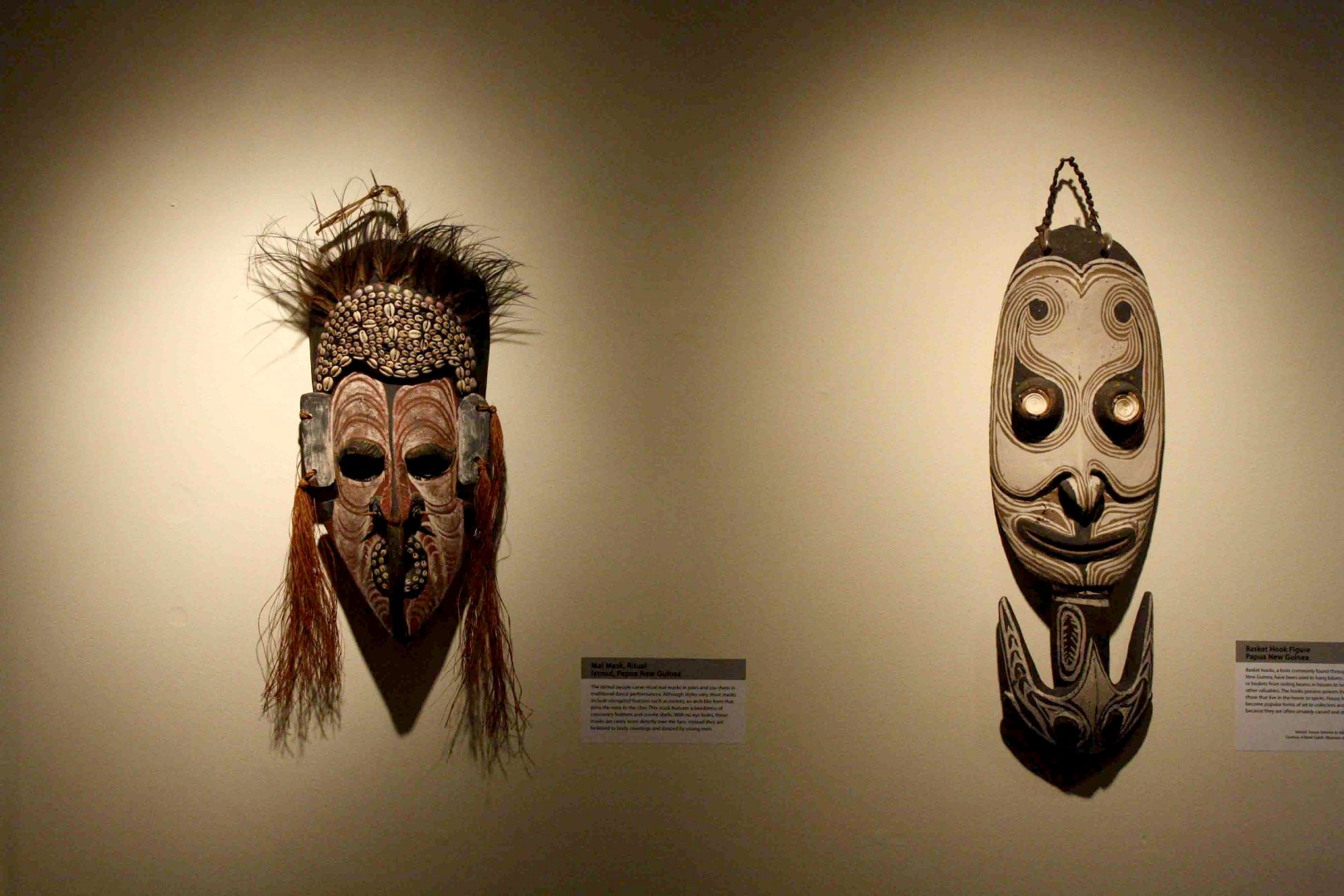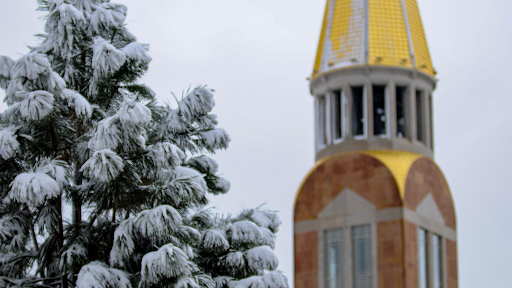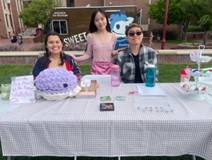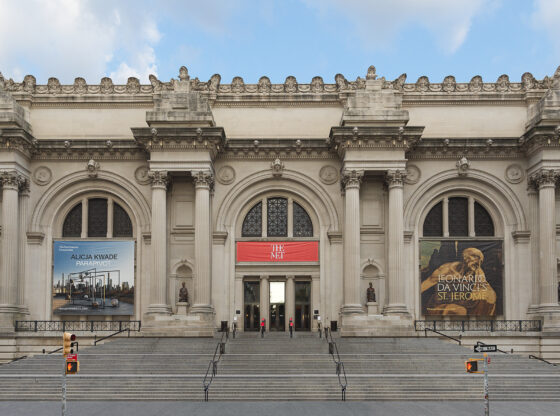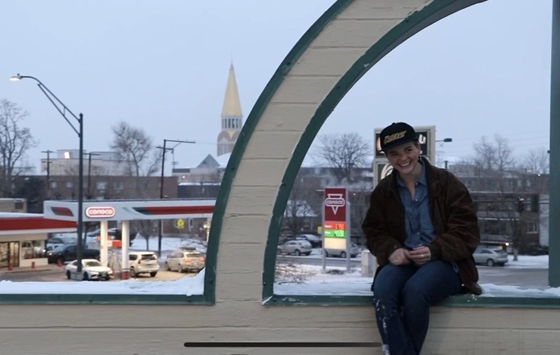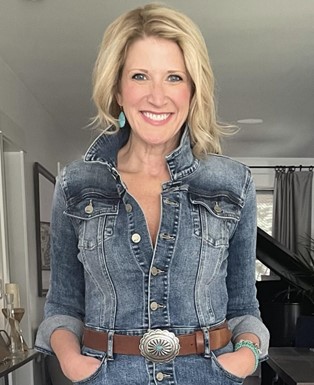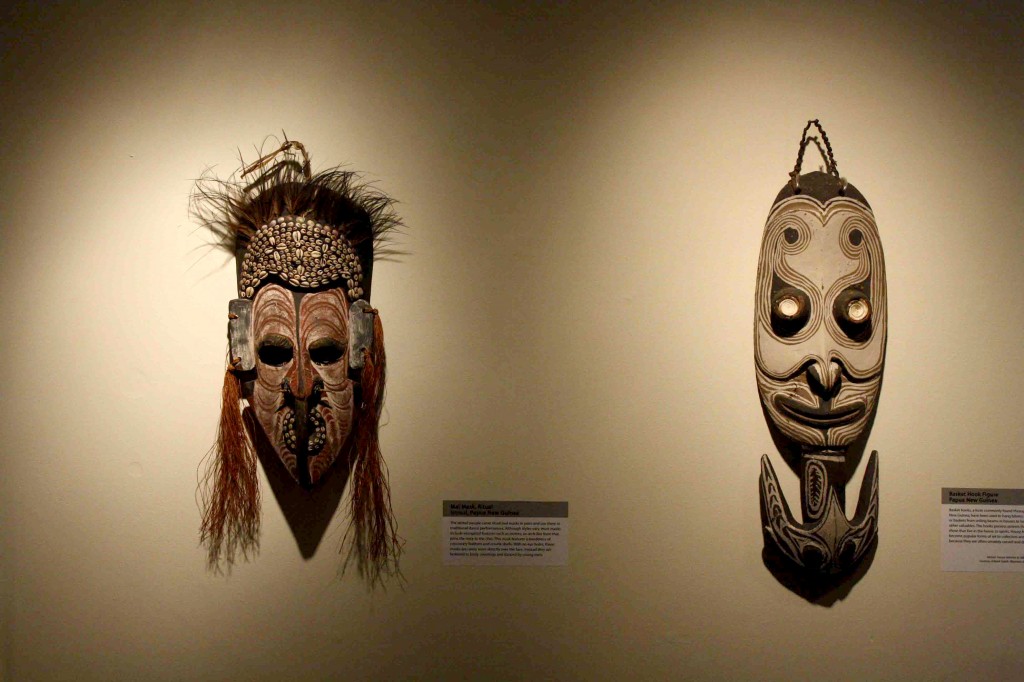
The “Objects and Lives” exhibit opened in the Museum of Anthropology located on the first floor of Sturm last week, displaying donated Oceanic masks, Navajo weavings and African objects.
The exhibit started Thursday night with about 35 people attending the reception, including DU faculty, the Denver community and a few students, some peeking in to see what all the fuss was about. There was a generous selection of finger foods, including egg rolls with a red dipping sauce and open bar.
“We want to convey to visitors how objects end up in museums and how they are layered with multiple meanings and purposes in differing contexts,” said Christina Kreps, associate professor and Director of Museum Studies and Director of DU Museum of Anthropology. “The University of Denver Museum of Anthropology is a teaching museum and learning laboratory for students, the DU community and general public.”
The exhibit is made up of objects that were donated to the Museum of Anthropology by members of the Denver community in order to tell the object’s stories to the DU and Denver community. While Kreps came up with the general idea for this exhibit, museum staff and Kreps’ students both contributed to the display.The foundation of Kreps’ “Art and Anthropology” course is meant to teach students how to research objects and their different meanings.
“The title of the exhibition, ‘Objects and Lives’ refers to how objects not only tell stories of those who created, collected or came to process them but [the objects also] have their own biographies, taking on new chapters as they pass from hand to hand,” said Kreps.
The unique items on display caught the eyes of students finishing up their day.
“I thought that this was interesting and it is unique that our school has the anthropology art museum that bring in different exhibits. It is something both students and professors can enjoy,” said Bess Hinton, a junior from Littleton, majoring in psychology who attended the exhibit.
Hinton would recommend students visit this exhibit to see for themselves the cultural importance these items brought with them.
“No matter what major or minor you are, it is very interesting to see what different artifacts people collected on their journeys throughout the world,” said Hinton.
All of the donors that contributed to this event are members of the Denver community, though none attended DU themselves.
“The donors are children, family members of the people who originally collected the pieces. They donated the objects to us because they were looking for appropriate homes for the pieces and thought our museum might like them,” said Kreps.
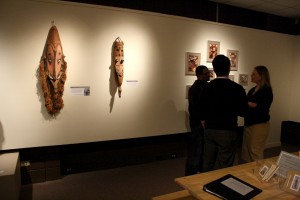
Notable donors include the Shannon family, who obtained artifacts while living in Africa starting in 1946. The parents, Clyde and Elisabeth, worked closely with the Tshokwe or Chokwe tribe. In 2012, their daughter, Joy Shannon, donated two masks and two wood figures to the Museum of Anthropology.
The Pende Mask was one of the African items on display that this family donated. It has eye catching sharpened teeth and was decorated with yellow ochre and white kaolin clay. The sharpened teeth are an example of a body modification method that is used by both men and women in traditional cultures throughout the Congo.
The Leavell Family also donated items and photographs collected in Papua New Guinea when they took a Society Expedition Air Safari in 1978. This took them to different parts of the country including the Sepik River region and Yari Yari Clan in the Tufi village. In 2012, Pete Leavell donated the items to the Museum of Anthropology on behalf of his family.
Mai Mask, which comes from Iatmul, Papua New Guinea, was one item that the Leavell family donated. This mask was made by Iatmul people meant to wear in traditional dance performances done in pairs as part of a ritual.These unique pieces of art are characterized by the molots, a piece that connects the nose and the chin. Because Mai Masks have no eye holes, they are usually tied to ones body.
Louise Geist collected countless items from her travels all over the world, including 30 countries, as part of her volunteer work for Earthwatch, a non-profit organization that helps conduct international scientific field research. In 2011, her son Don Geist donated a number of these artifacts in his mother’s name.
These items included a Basket Hook Figure, which are commonly used in Papua New Guinea households to hang bilums (string bags) or baskets containing food and other materials from the ceiling.
The hooks are thought to have powers that connect the family that lives in the house to spirits. These hooks are now elaborately carved and decorated and have become a popular item for tourists to pick up.
The exhibit also featured donations from people who asked to remain anonymous. Among these donations were two Grey Hills Rugs from the Navajo Nation in New Mexico.
Open weekdays from 9 a.m. to 4 p.m. and closed on the weekends, this free exhibit will run through March 15 and is open to the public.

